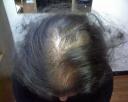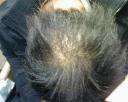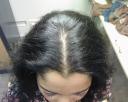Scheme which helps female cancer patients cope with hair loss to be extended
07.04.2008 in FEMALE HAIR LOSSby Michelle Fiddler, Liverpool Echo
A SERVICE that helps female cancer sufferers cope with hair loss is being expanded in Liverpool.
Breast Cancer Care is expanding its HeadStrong service at the Linda McCartney Centre in the Royal Liverpool University Hospital.
HeadStrong gives tips on headscarves, hats and hairpieces to help reduce the impact of hair loss.
Clients are offered private and confidential hour-long appointments, and they can attend as many times as they want.
The charity is now looking for people to become HeadStrong volunteers. Full training will be given, so no prior experience or skills are needed.
All training and support will be provided by Breast Cancer Care, while the service will be managed by the Macmillan Cancer Centre, based in the Liverpool Royal University Hospital.
Sandra Metcalfe, a HeadStrong volunteer at the Macmillan Cancer Centre said: “Losing your hair is one of the most obvious side effects of cancer treatment and it can be a very distressing time.
“The HeadStrong service helps people to get their confidence back and I really enjoy being able to put a smile on someone’s face every day.”
To find out more about becoming a volunteer, or to get an application form, contact 0845 0771893 or e-mail nrc@breastcancer care.org.uk
Do you have Hair Loss Problems, read our Hair Loss Help









